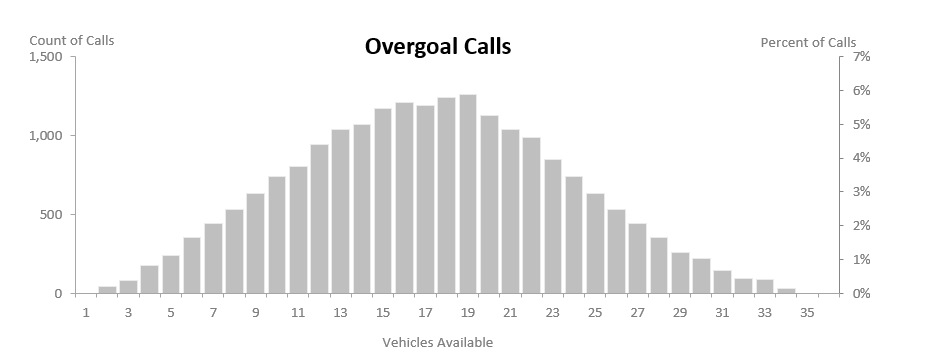Do the busiest times hurt performance the most? Conventional wisdom suggests that performance suffers the most when the system is strained. As unit availability decreases, fractile response is justifiably lower: fewer vehicles drive further to reach more calls. Our intuition says it is these high stress times that prevent us from meeting our performance goals.
But is this truly the case? Is the system strained often enough that performance at these times makes a large difference?
The relationship between performance and available units
In looking at dozens of services, we’ve found similar patterns in the relationship between fractile performance and available units. The figure below demonstrates this for a large urban centre that aims for 80 per cent response performance, but currently meets its target at 75 per cent.

The above chart demonstrates how response performance declines as unit availability decreases; in this example, from a high of around 80 per cent with 30 or more vehicles available, to a low of around 50 per cent with only a couple of vehicles available.

In the second graph above, we see something unexpected: the system only rarely drops below 10 units available. Most of the calls occur when there are sufficient response units available. Clearly, it’s not those code red events that are hurting overall performance—something else is. In fact, in the state where it spends most of its time (between 15 and 25 units available), the system only performs at 75 per cent.
This phenomenon reinforces the importance of focusing on the right aspects of your system. If all your efforts are on reducing code red events, you may not actually make a dent in your overall performance. Improving these “non-stressed” responses will have the greatest impact on performance.


